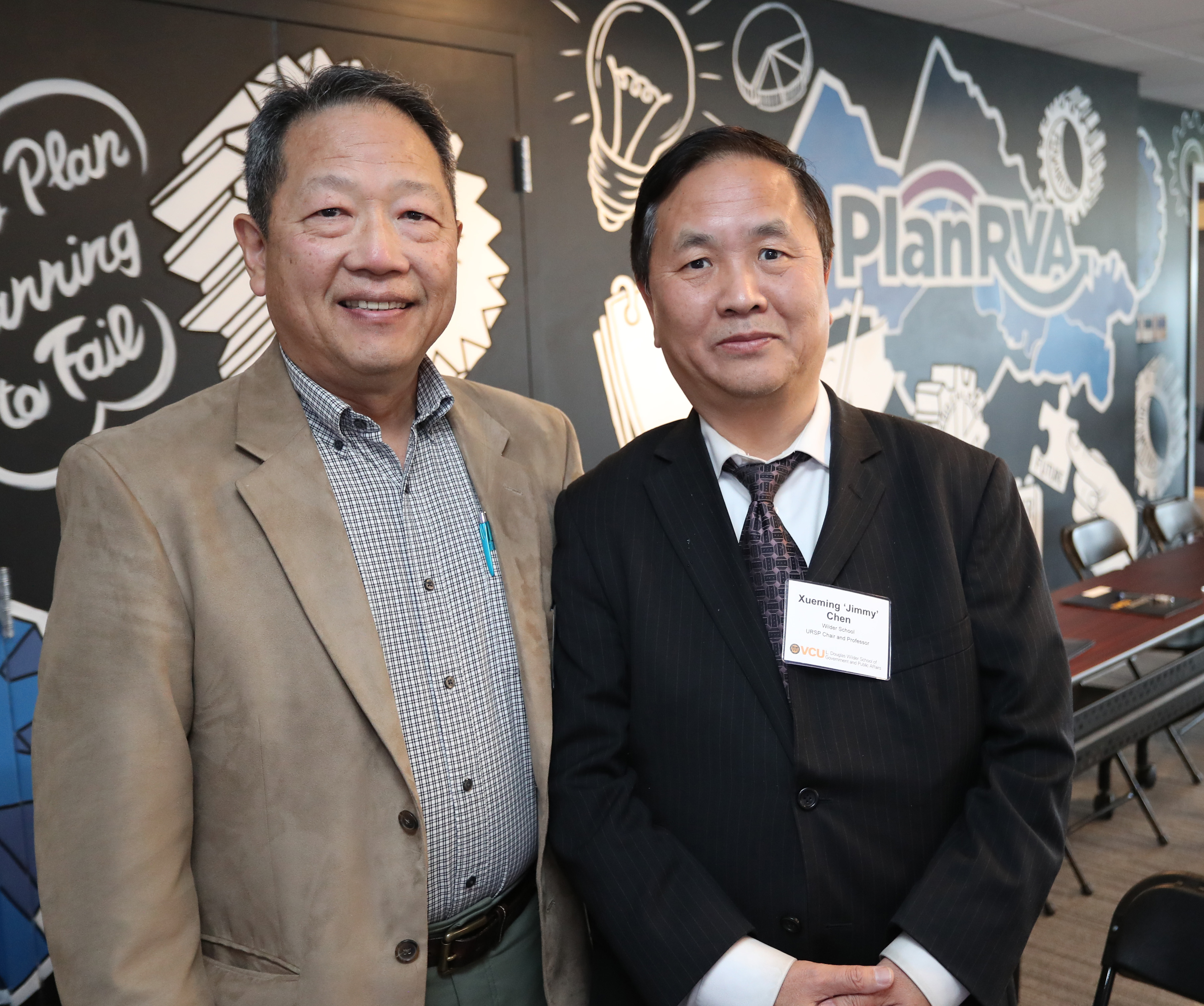News
Unequal Distribution of Pharmacies in Virginia Leaves Vulnerable Populations at Risk, Study Shows
By Tiffany Murray-Robertson
When was the last time you had to fill a prescription? For many people, accessing a pharmacy is as easy as taking a short drive or a quick walk, but for others, the nearest pharmacy might be miles away, making it difficult to obtain necessary medications.
This is particularly true for vulnerable populations, including minorities, older adults, individuals with disabilities, and those without access to a car. The lack of access to pharmacies creates serious health consequences for these groups, including interruptions in medication schedules and increased hospitalization rates.
A new Wilder School study, “An Analysis of Spatial Disparity of Pharmacies, in Virginia, USA.,” published in the Journal of Urban and Regional Analysis sheds light on prescription access in Virginia. Conducted by Xueming “Jimmy” Chen and I-Shian “Ivan” Suen, both professors of urban and regional planning at the L. Douglas Wilder School of Government and Public Affairs at Virginia Commonwealth University, the study examined the accessibility of pharmacies in the state, with a focus on vulnerable populations.

The researchers used a variety of data sources, including the American Community Survey and the Virginia Board of Pharmacy, to create a comprehensive picture of pharmacy accessibility in Virginia. They found that while most Virginians have relatively easy access to pharmacies, vulnerable populations face significant barriers due to uneven distribution and complex spatial patterns.
"In the western and southwestern parts of Virginia, pharmacies are inadequate for people aged 65 or older,” said the study's lead author, Jimmy Chen. “Pharmacies are inadequate to varying degrees in relation to non-white persons overall, revealing that racial inequity of access to pharmacies is ubiquitous in Virginia."
“Pharmacies are inadequate to varying degrees in relation to non-white persons overall, revealing that racial inequity of access to pharmacies is ubiquitous in Virginia."
-Xueming 'Jimmy' Chen, Ph.D.
The study identified three important findings. Firstly, pharmacy locations in Virginia are unevenly distributed, with most commercial pharmacies concentrated in three major urban areas: Northern Virginia, Central Virginia and the Hampton Roads urban areas. As a result, there are "pharmacy deserts" in more rural areas of the state, particularly in the western and southern parts of the commonwealth. Secondly, the study found that the concentration and distribution of older citizens (aged 65 or older) are most significantly associated with pharmacy locations at the statewide macro level among the four vulnerable populations examined. Finally, at the more localized level, the study revealed complex spatial patterns along different social dimensions, demonstrating the existence of social inequity in addition to spatial equity.
"Imagine a world where policymakers prioritize the needs of vulnerable populations when it comes to developing new pharmacies," said co-author Ivan Suen. "By painting a vivid picture of these communities, we can direct much-needed amenities to the places where they are most needed.”
“Currently, the pharmacy industry operates on a purely market-driven model, with most commercial pharmacies clustered at busy intersections,” Suen said “But what if we could refine our thinking to include equitable service distribution? This could be a game-changer for improving the quality of life for those who need it most."
Chen and Suen view their initial study as an important test case for examining access to urban amenities among disadvantaged populations. They hope to expand future project scopes to include other amenities such as senior centers and health facilities and are currently pursuing partnerships.
"Our study provides a blueprint for future research on accessibility and equity of urban amenities," said Suen." By understanding the spatial distribution of different amenities and their relationships with vulnerable populations, we can inform policies that improve access and reduce health disparities. Access to healthcare is just one piece of the puzzle. We need to consider how different amenities and services interact with each other and with the built environment to create opportunities and barriers for people. Our goal is to create more vibrant and inclusive communities where everyone can thrive."
To address the pharmacy access issues highlighted in the study, Chen and Suen acknowledge that several policy changes should be adopted. These include financial incentives or subsidies for pharmacies in food deserts, expanded telehealth options, and increased transportation services for those without a car. They note that such interventions will require strong partnerships between government agencies, healthcare providers and community organizations to ensure their successful implementation.